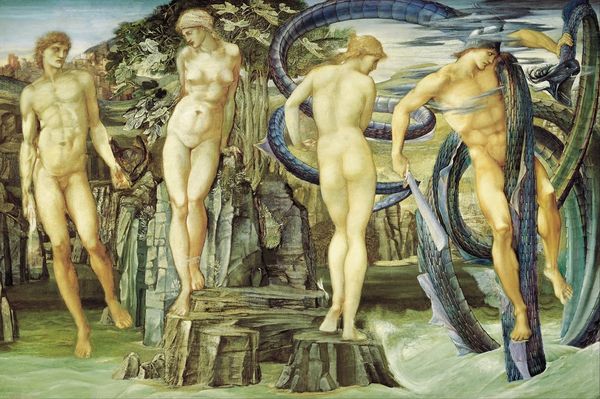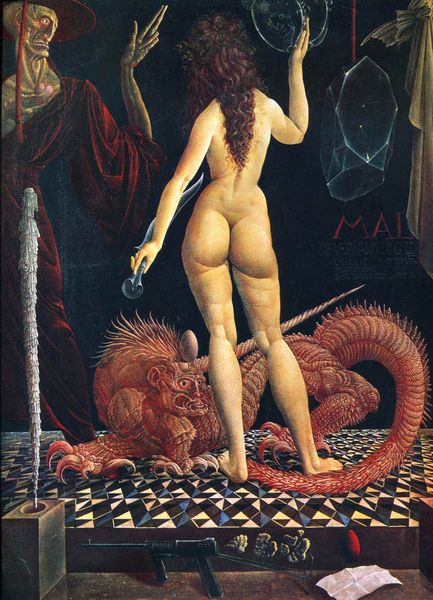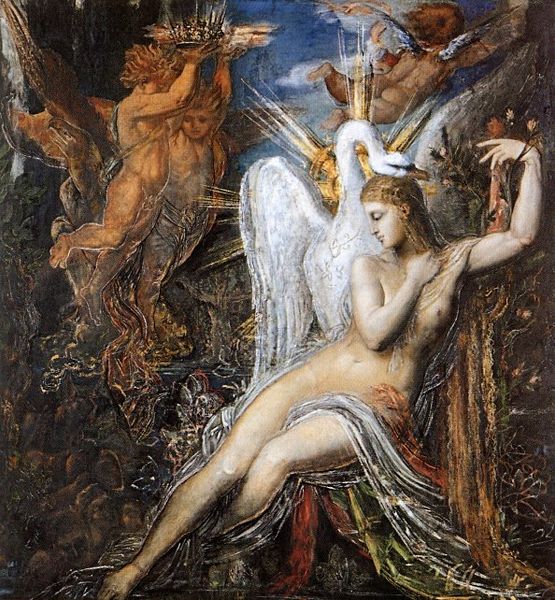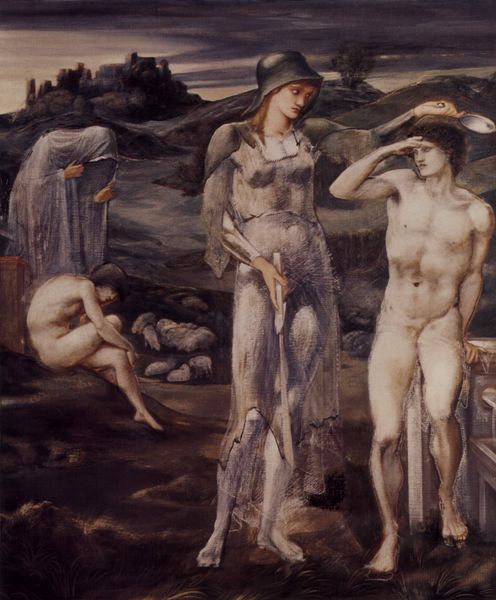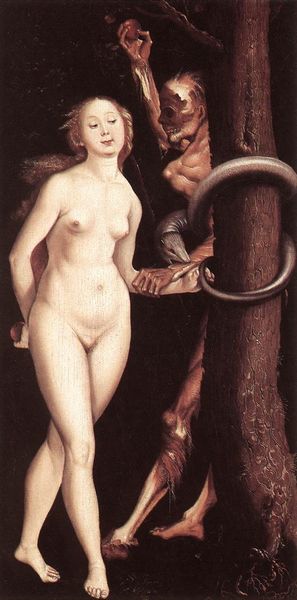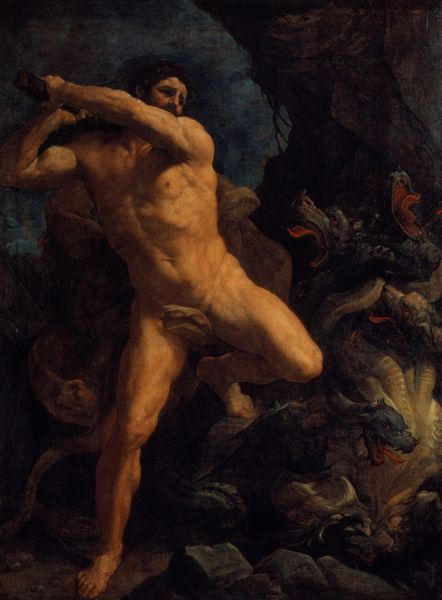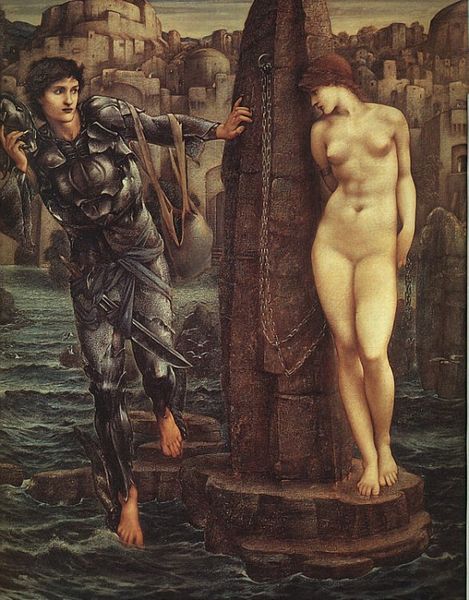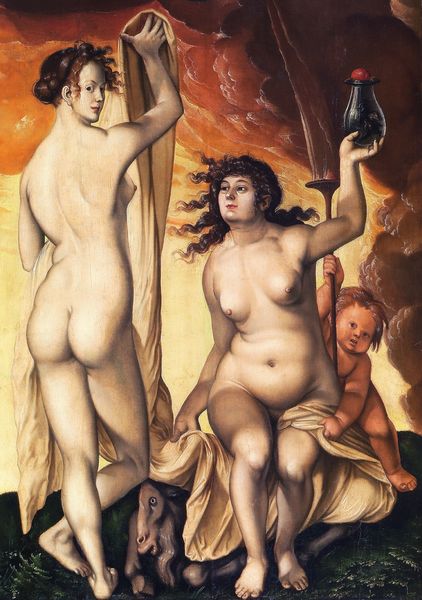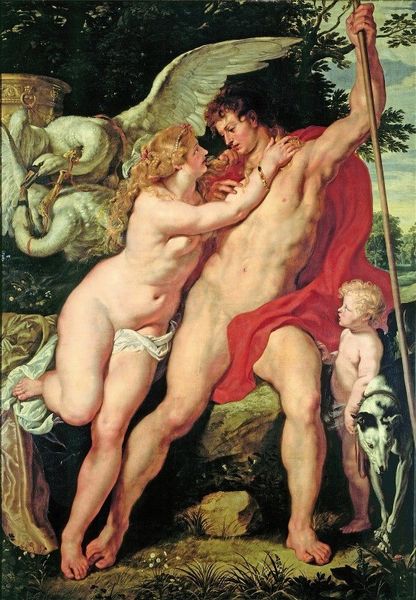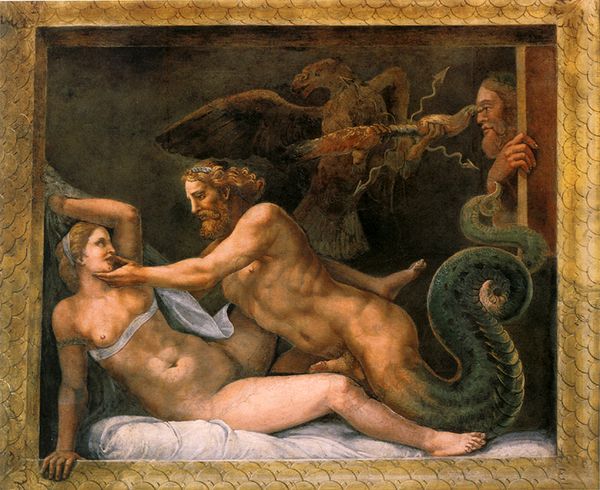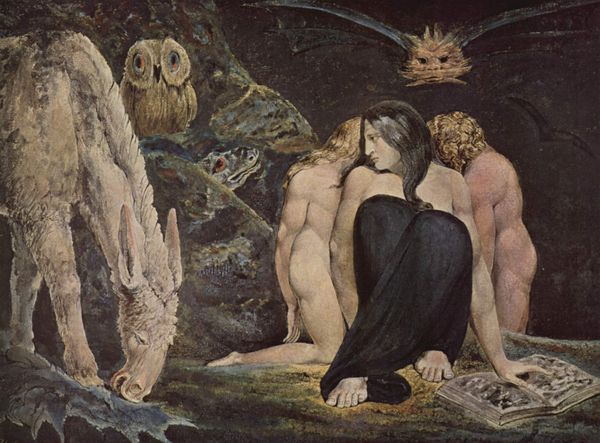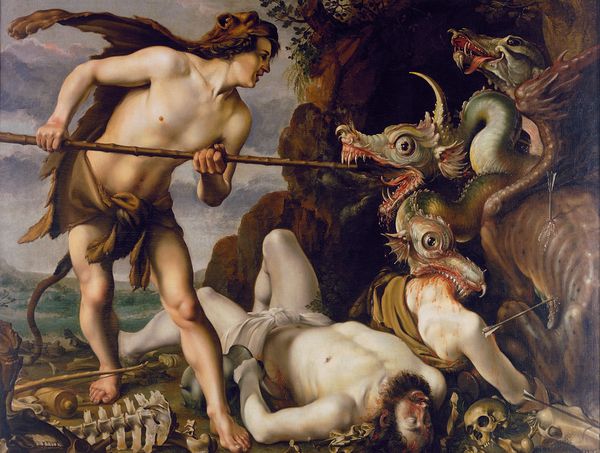
The Doom Fulfilled 1885
0:00
0:00
siredwardcoleyburnejones
Southampton City Art Gallery, Southampton, UK, Staatsgalerie Stuttgart, Stuttgart, Germany
painting, oil-paint
#
allegory
#
painting
#
oil-paint
#
figuration
#
oil painting
#
female-nude
#
roman-mythology
#
mythology
#
history-painting
#
pre-raphaelites
#
nude
Copyright: Public domain
Editor: This is "The Doom Fulfilled," painted by Edward Burne-Jones around 1885, using oil paints. The muted palette creates a somber mood, and the almost sculptural rendering of the figures makes me think about production—of images but also maybe something about power? What catches your eye about this piece? Curator: I see an interesting dialogue concerning labor within this seemingly straightforward mythological scene. Consider the materiality of Burne-Jones's Pre-Raphaelite style. Think about the layers of oil paint, the build-up of pigment that simulates flesh and steel. The painting becomes an object, crafted meticulously by hand. Editor: So, you’re saying the process itself becomes a point of focus? Curator: Precisely! It isn't only a painting illustrating a mythological story; it is also a product of considerable labor. It asks: who creates these images? Who consumes them? Notice also the rendering of Andromeda's chains and Perseus' armour – these are crafted items depicted through painting. This elevates craftsmanship within fine art while also bringing to mind things like Victorian labor practices. How does the mode of production affect the way the subject matter is perceived? Editor: It shifts the focus away from the pure aesthetics. Instead, it asks about how labor is valued and displayed within the picture itself. Curator: And the consumption of these images is also work—interpreting the allegory, acknowledging the means, feeling the texture that paint simulates. A real commodity presented as aestheticized narrative. Editor: So we move past just the 'what' and think about the 'how' and 'why' the painting exists at all. This gives a lot of meaning to Burne-Jones' art. Curator: Absolutely. By understanding its materiality and production, the work can reveal more about its value system and impact.
Comments
No comments
Be the first to comment and join the conversation on the ultimate creative platform.
